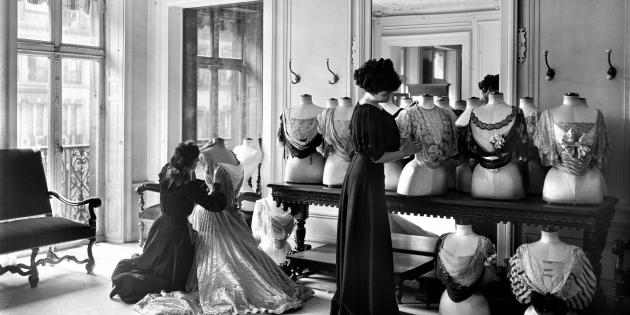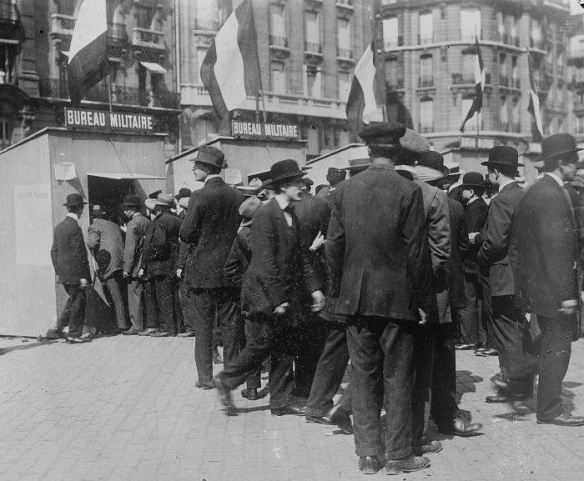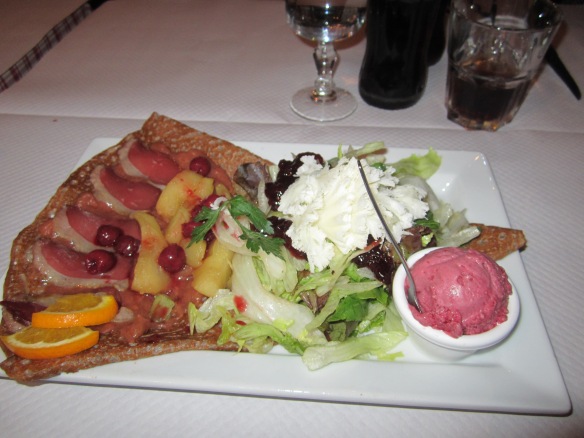August 1-2, 1914: World War I Breaks Out and Wharton Visits her Dressmaker
One hundred years ago today, American novelist Edith Wharton was living in Paris, and like all Parisians, was waiting for news of war. Germany and Russia had declared war on each other only the day before. Everyone in Paris held their breath.
Edith Wharton visited her dressmaker.
I’m not making light of the tragedy of war, and neither was Wharton. I remember studying history in college and thinking to myself, there has to be more to history than the story of men marching into battle. What did the women do? How were the families affected? What did the women whisper among themselves?
Imagine yourself a woman in Paris on the eve of war. It’s the beginning of August. Everyone knows that Paris empties out for an entire month at the end of summer. Who knows what businesses would stay open if war came. If Edith Wharton needed to get fitted for new dresses, time was of the essence.
Wharton couldn’t just run into Galleries Lafayette, recently opened in 1912, because that kind of place provided fast fashion for the masses. Wharton was a high-society woman, and had been a long-time client of the fashionable couture dress designers of rue de la Paix in Paris, such as the House of Worth and Droucet.
In Fighting France (Scribner’s 1915), Wharton reports that she visited her dressmaker’s, but is discreet enough not to drop a name. We don’t know if she went to Worth, Droucet, or someone else’s shop, but it was likely on the rue de la Paix, just a short walk from the Hôtel de Crillon where she was staying. She later stated in an article for Scribner’s Magazine that she interacted with the seamstresses who were anxious about the prospect of war.
At the dressmaker’s, the next morning, the tired fitters were preparing to leave for their usual holiday. They looked pale and anxious – decidedly, there was a new air of apprehension in the air.

Seamstresses at the atelier de couture chez Worth, Paris 1907. Source: http://emblah13.wordpress.com/2013/08/11/house-of-worth-photographs/

House of Worth Draping blouses, 1907. Source: http://emblah13.wordpress.com/2013/08/11/house-of-worth-photographs/

House of Worth Salon, 1907. Source: http://emblah13.wordpress.com/2013/08/11/house-of-worth-photographs/
After visiting the dressmaker, Edith Wharton returned to La Place de la Concorde, where she observed people standing on the street corner, reading a newly posted notice on the French Naval Headquarters. It was the French mobilization notice.
And in the rue Royale, at the corner of the Place de la Concorde, a few people had stopped to look at a little white piece of paper against the wall of the Ministère de Marine. “General mobilization” they read – and an armed nation knows what that means. But the group about the paper was small and quiet. Passers by read the notice and went on. There were no cheers, no gesticulations: the dramatic sense of the race had told them that the event was too great to be dramatized. Like a monstrous landslide it had fallen across the path of an orderly laborious nation, disrupting its routine, annihilating its industries, rending families apart, and burying under a heap of senseless ruin the patiently and painfully wrought machinery of civilization. . . .
Later that night, Wharton dined at a restaurant on rue Royale, not far at all from the Crillon. It could have been Maxim’s, which was certainly a popular dining destination at the time. Wharton could see that the mobilization order was already being obeyed.
That evening, in a restaurant of the rule Royale, we sat at a table in one of the open windows, abreast with the street, and saw the strange new crowds stream by. In an instant we were being shown what mobilization was – a huge break in the normal flow of traffic, like the sudden rupture of a dike. The street was flooded by the torrent of people flowing past us to the various railway stations. All were on foot, and carrying their luggage; for since dawn, every cab and taxi and motor-omnibus has disappeared. The War Office had thrown out its drag-net and caught them all in. The crowd that passed out window was chiefly composed of conscripts, the mobilisables of the first day, who were on their way to the station accompanied by their families and friends; but among them were little clusters of bewildered tourists, laboring along with bags and bundles, and watching their luggage pushed before them with hand-carts – puzzled inarticulate waifs caught in the cross-tides racing to a maelstrom (Fighting France, Scribner’s 1915).
Inside the rue Royal restaurant a loud patriotic mood prevailed.
In the restaurant, the befrogged and red-coated band poured out patriotic music, and the intervals between the courses that so few waiters were left to serve were broken by the ever-recurring obligation to stand up for the Marseillaise, and to stand up for God Save the King, to stand up for the Russian National Anthem, to stand up again for the Marseillaise. “Et dire que ce sont des Hongrois qui jouent tout cela!” a humorist remarked from the pavement. [And to say that they are all Hungarians who play here!]
As the evening wore on and the crowd about our window thickened, the loiterers outside began to join in the war-songs. “Allons, debout!” and the loyal round begins again. “La chanson du départ” is a frequent demand; and the chorus of spectators chimes in roundly. A sort of quiet humor was the note of the street. Down the rue Royale, toward the Madeleine, the bands of other restaurants were attracting other throngs, and martial refrains were stru ng along the Boulevard like its garland of arc-lights. It was a night of singing and acclamations, not boistrous, but gallant and determined. It was Paris badauderie at its best
(Fighting France, Scribner’s 1915).

Families accompanying their soon-to-be French soldiers to the train station, August 1914. Source: http://vergue.com/post/2013/10/08/A-la-guerre-en-chantant-1914

Lines form for French mobilization at Gare de Lyon train station in Paris. The official order was given at 4 pm on Saturday, August 1st, beginning the initial call-up of a million men for the French Army. Source: http://www.historyplace.com/worldhistory/firstworldwar/fr-mobilize.htm
*A note about dates: Edith Wharton’s exact dates get confusing in Fighting France, The Look of Paris. She often repeats herself by saying, “the next day.” The reader is left to wonder, the next day, or the same day as the last time you said the next day? For example, it appears the French mobilization order was issued at 4pm on August 1st, but it was dated August 2nd. So did Edith Wharton see the posted notice late in the day on the first or mid-day on the 2nd? Sorry to confuse you even further. My point is, I’m trying to get the dates right but I could be off a day or two. Let’s just all stipulate that it’s definitely early August? Good. Then I’m done worrying about it.
Recommended Reading:






















You must be logged in to post a comment.